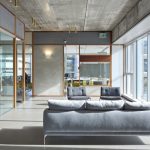
Copenhagen-based OEO Studio designed a new flagship restaurant for Sticks’n’Sushi located on the top floor of the new Tivoli Corner located in the heart of the city’s historic Tivoli area. The design concept embraces “Japanordic” design reflecting the meeting of East and West and drawing inspiration from Japan reinterpreted in a modern European context. Take a look at the complete story after the jump.

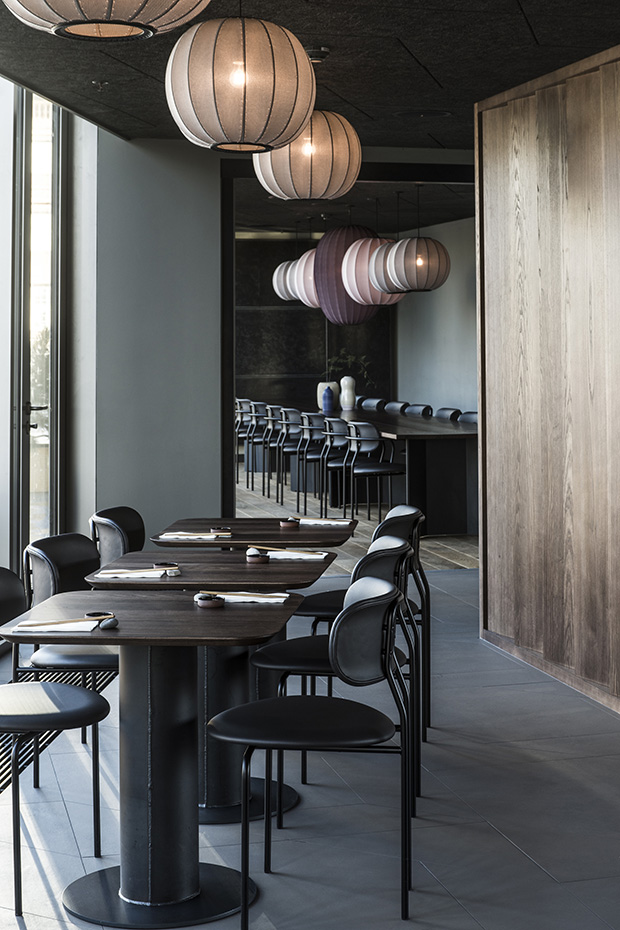
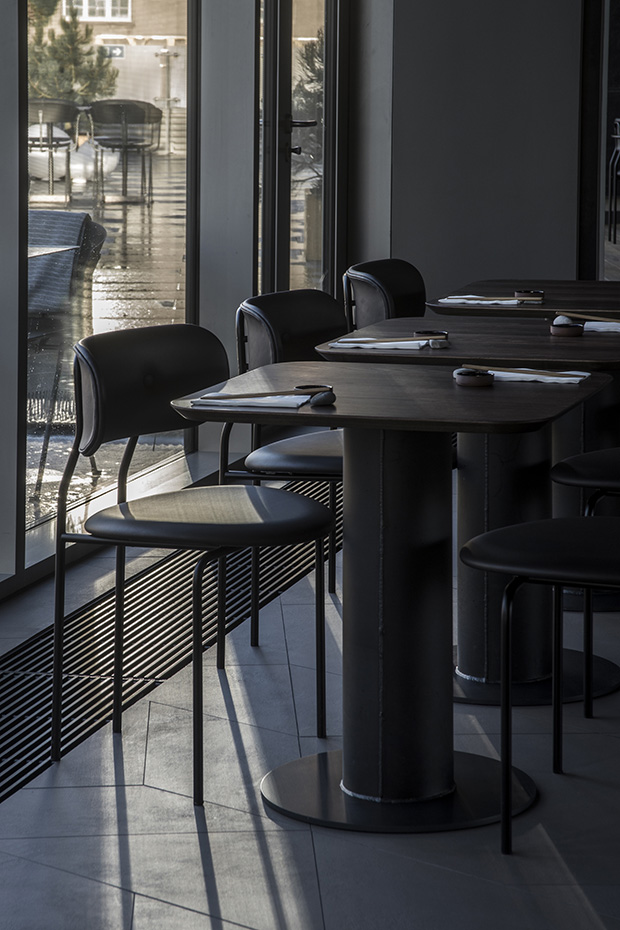
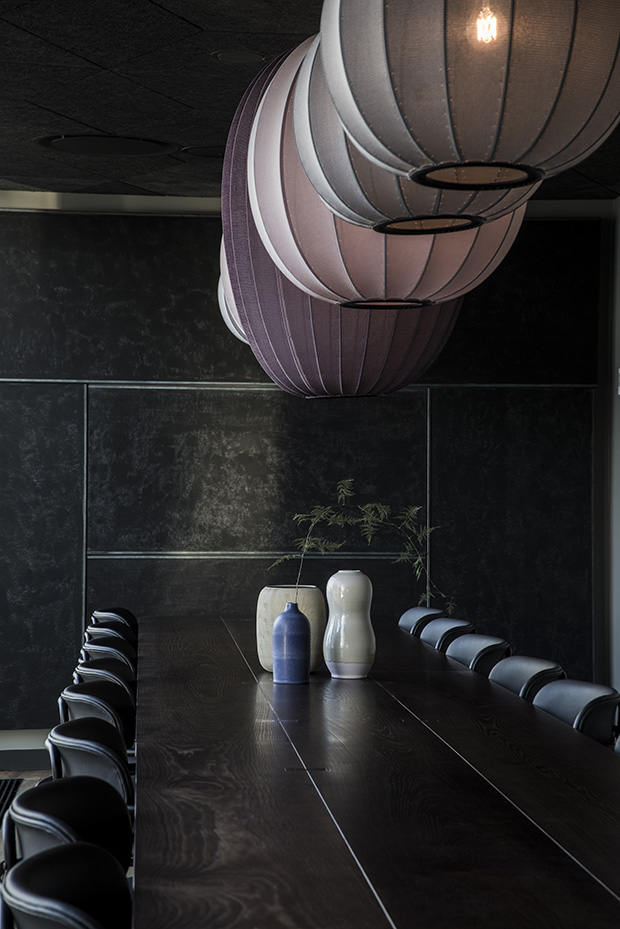
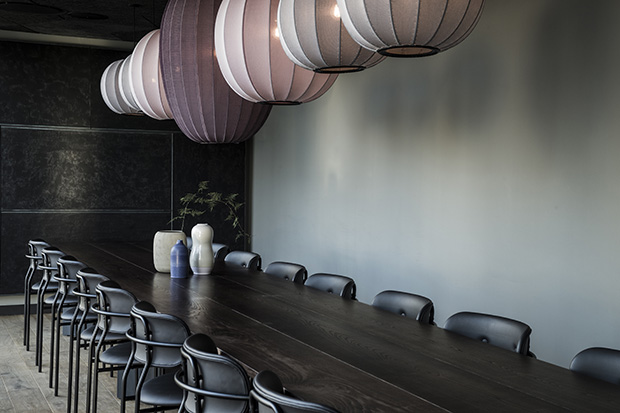
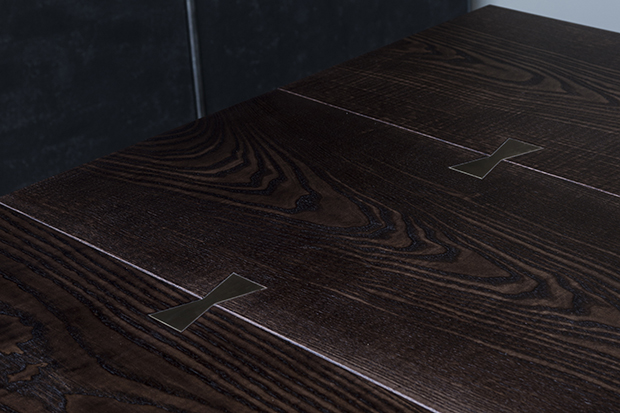

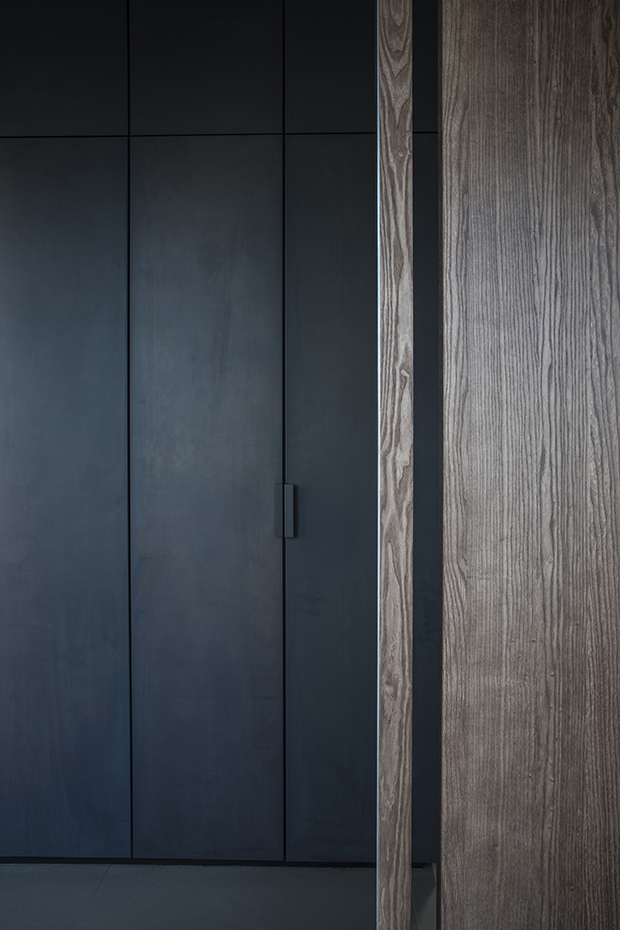

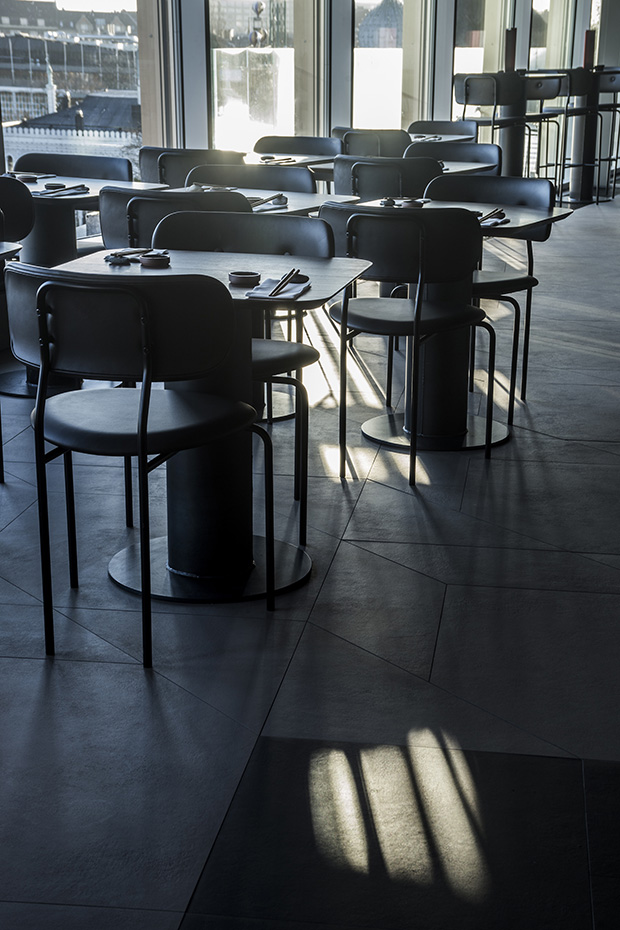
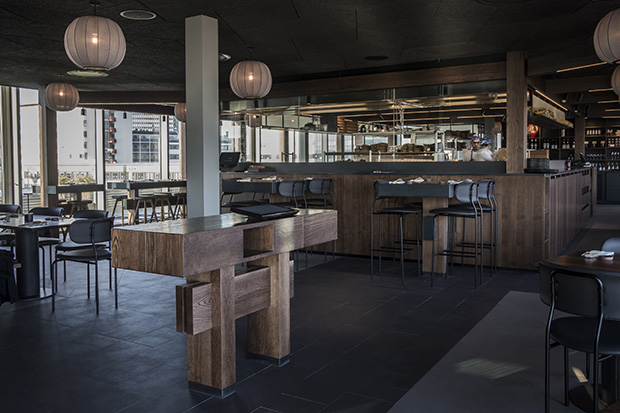
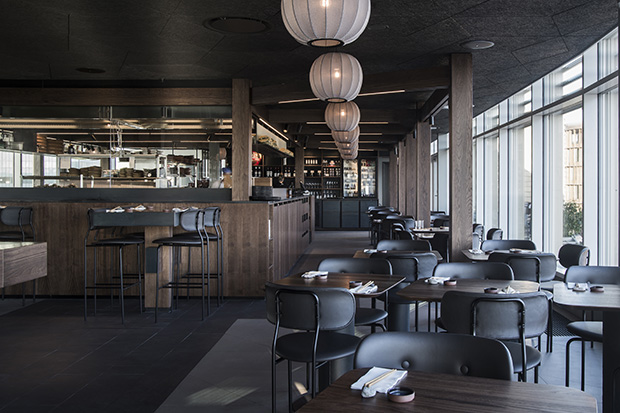
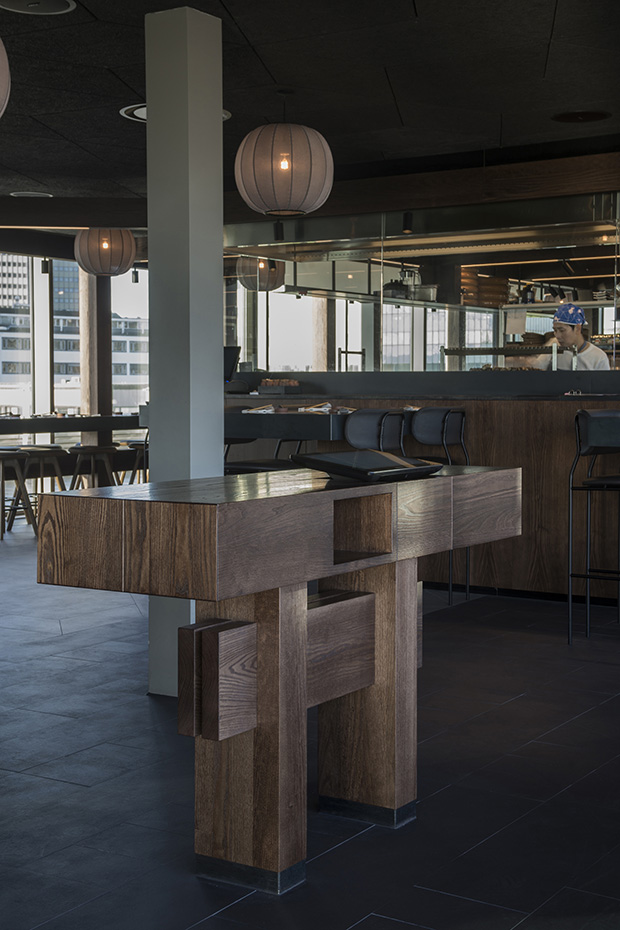
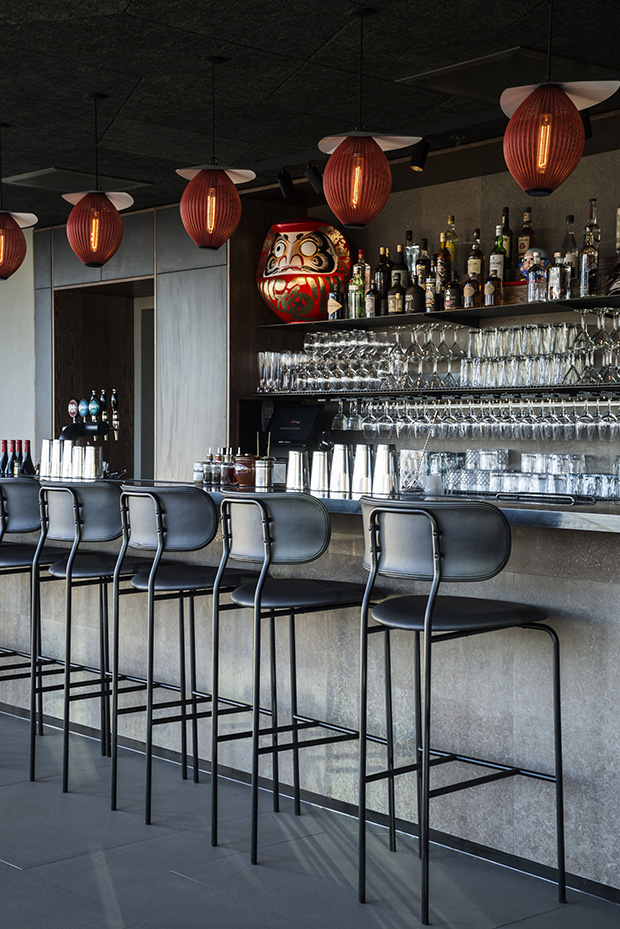
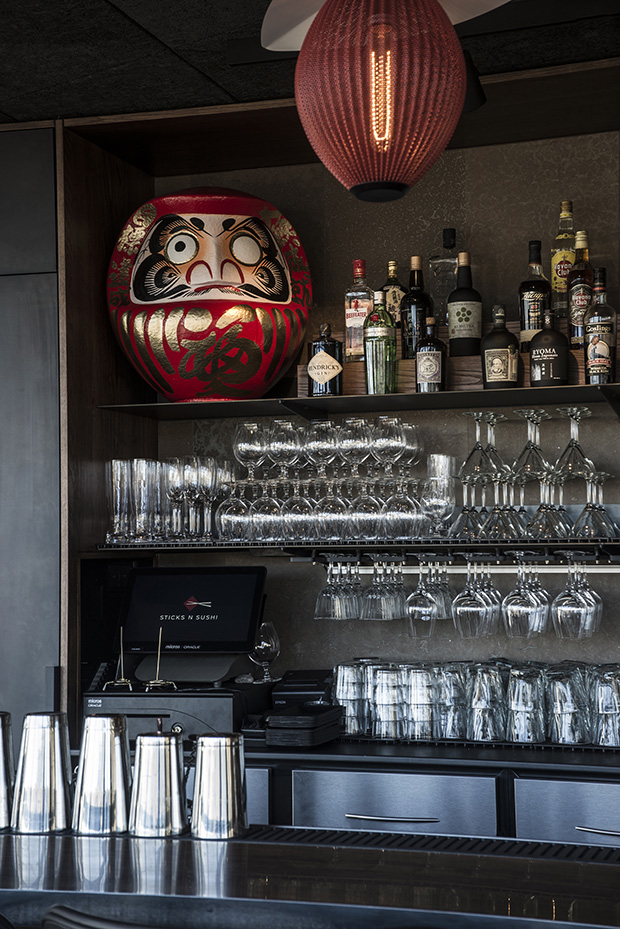
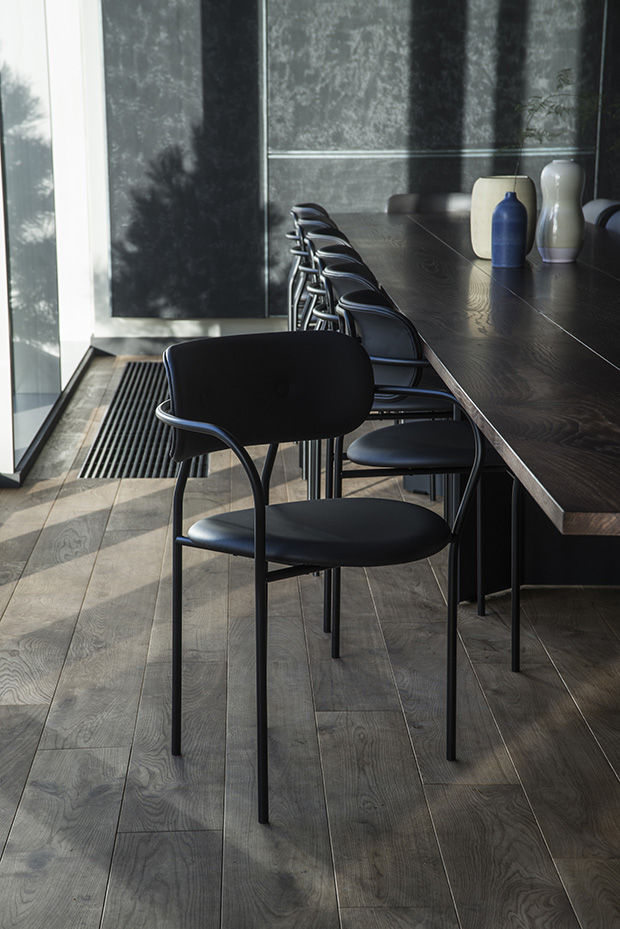
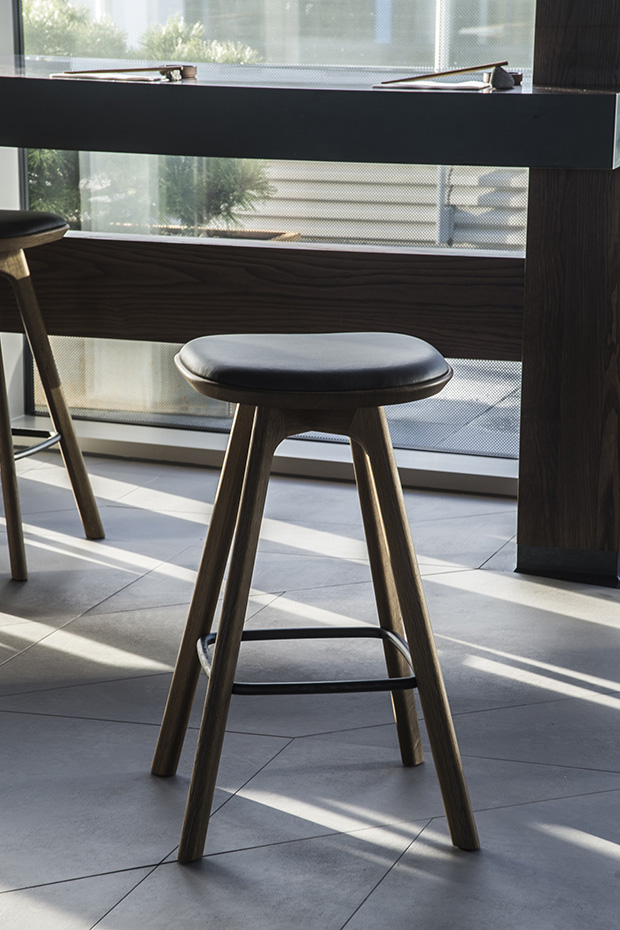

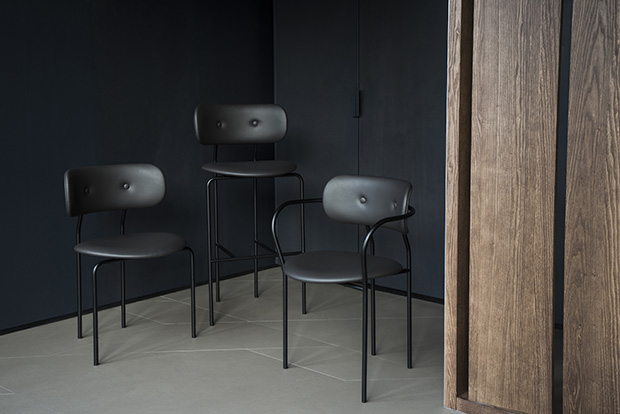
Tivoli Corner is a multifunctional development designed by world-renowned architects Pei Cobb Freed & Partners of New York. The new-build space is home to retail outlets, restaurants, a food hall and 21 new guestrooms for the award-winning Nimb Hotel.
The design concept devised by OEO for the new restaurant is based on the Sticks’n’Sushi brand universe, which reflects the meeting of East and West and draws on inspiration from Japan reinterpreted in a modern European context. The result is a warm and welcoming space with many evocative details, bespoke design elements and high quality materials blended together to offer a taste of Japan in central Copenhagen.
Early in the design process, OEO Studio were met with the challenge presented by the shape of the rooftop restaurant space and by the complex architecture of the building itself. The building is unusual in that there are no straight walls in the space and floor-to-ceiling windows on both sides of the building. Low ceiling height was another obstacle that OEO Studio had to balance and convert into a positive asset within the overall spatial experience. OEO noticed that a birds-eye view of the Tivoli Corner building resembled a shape of a fish and chose to use this apparent outline as an abstract starting point for designing the restaurant space.
OEO Studio employed deep, earthy ceramic tiles by Italian company Mutina on the floor of the restaurant to subtly represent the scales, the fins and eye of the fish. This whimsical design detail would be impossible for the human eye to grasp while in the space, without prior awareness of the designer’s intent.
Bespoke artworks have been introduced to elevate and enhance the diners’ experience including a small group of handmade wire fish created by Danish designer, Anders Hermansen. The fish gently guide diners from street level to the heart of the restaurant on 3rd floor.
The centrepiece of the restaurant and the focal point for all the action taking place in the heart of Sticks’n’Sushi is the kitchen structure and pavilion. The custom-built wooden structure provides a skeletal frame for a highly functional, showpiece kitchen designed to optimise service functions as well as enhance the overall dining experience.
The restaurant design comprises a mix of dining-height and high counter seating offering a range of views to the open kitchen or out across the city skyline. A private dining room which can accommodate groups of up to 20 diners, features a bespoke stained ash 6.4-metre-long table designed by OEO Studio and warm wooden oak flooring. The space, when not in use for private dining, offers casual seating for smaller groupings along the table.
Throughout the restaurant, OEO Studio has incorporated superior interior materials, including high-quality ash and oak, Swedish Öland limestone, hot rolled steel and Italian ceramics. Large Pico tiles by Bouroullec for Mutina feature in the bathrooms along with bespoke wooden cabinets, natural stone wash-basins, black Dornbracht faucets and lighting by Danish design brand, Frama.
RELATED: FIND MORE IMPRESSIVE PROJECTS FROM DENMARK
A considered restaurant lighting programme is comprised of both mood and technical solutions, which blend perfectly to support the entire spatial experience. Soft mood lighting includes the use of transparent Knit-Wit Lamp by Iksos-Berlin for Made by Hand. The 360-degree 3D-knitted lamp design takes inspiration from the sun and from the traditional Chinese rice lamp, symbolic of the Far East. Shy Berry-coloured perforated Satellite Pendant lights by Mathieu Matégot highlight the bar area, while a magnetic LED spot solution from Deltalight creates a sense of theatre around the open restaurant’s open kitchen.
OEO Studio has paid careful attention to the acoustics of the space to balance the bustle of a busy restaurant with the open kitchen, while enabling over dinner conversation. Innovative Rhomb panels in a dark anthracite shade by Troldtekt have been introduced to strengthen acoustics and enhance the overall interior design, resulting in an unobtrusive and discreet decorative look.
There are many custom details throughout the new Sticks’n’Sushi. All furnishings have been designed by OEO Studio and include a mix of new and bespoke pieces, such as the Coco dining chairs, stools and lounge chairs for Gubi and the OEO Studio-designed Pauline bar stool for Brdr. Krüger. Seating has been selected to offer the utmost level of comfort and durability and features leather upholstery from Sorensen Leather. OEO Studio also created the stained ash tables found in the restaurant and private dining room, and a custom-designed stained ash host station.
Not content with designing the interior, OEO Studio also designed the tableware for the restaurant, which comprises new bespoke ceramic plates, trays, bowls and a soy vessels, all produced in Portugal. The tableware has a hand-crafted look and is featured in a greenish blue colour blend that emphasises the presentation of the food.
Adjacent to the restaurant lies a large outdoor roof-top terrace with bar area and seating for 100 guests with impressive views over Copenhagen and Tivoli Gardens. Terazzo tables from HAY are complemented with the distinctive wrought-iron Magis Officina Chair and the space is surrounded by planters with a mix of vegetation, including pinus nigra, acer japonica, phyllostachys and silvergrass that reference both Japan and Denmark.
Photography is courtesy of OEO Studio
Find more projects by OEO Studio: www.oeo.dk


